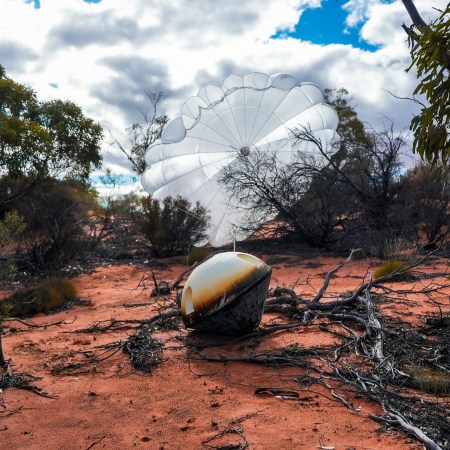Scientists: The Sun’s bright corona acts to impede coronal mass ejections
Using data gathered by the Solar and Heliospheric Observatory (SOHO) since its launch in 1995, scientists have determined that when the Sun’s corona (its atmosphere) is bright, it acts to slow and even block the ejection of coronal mass ejections (CMEs), which if they impact the Earth’s magnetic field can have a harmful effect on our modern technology.
Using data from NRL’s Large Angle and Spectrometric Coronagraph Experiment (LASCO) on board the joint European Space Agency (ESA)-NASA Solar and Heliospheric Observatory (SOHO), the NRL team [National Research Laboratory] compiled nearly three decades of observations of the solar corona. They studied the extensive dataset to investigate trends in the brightness of the Sun’s corona and compare them to CME velocities over the same period. Their study found a strong correlation between the two datasets, with bright regions of the solar corona appearing to relate to substantially slower CME velocities and, in some cases, perhaps entirely precluding CMEs.
This data will help solar weather observers better predict the arrival of CMEs, should they erupt from the Sun aimed at Earth. It will also allow them to gauge the risk of CMEs even occurring.
Using data gathered by the Solar and Heliospheric Observatory (SOHO) since its launch in 1995, scientists have determined that when the Sun’s corona (its atmosphere) is bright, it acts to slow and even block the ejection of coronal mass ejections (CMEs), which if they impact the Earth’s magnetic field can have a harmful effect on our modern technology.
Using data from NRL’s Large Angle and Spectrometric Coronagraph Experiment (LASCO) on board the joint European Space Agency (ESA)-NASA Solar and Heliospheric Observatory (SOHO), the NRL team [National Research Laboratory] compiled nearly three decades of observations of the solar corona. They studied the extensive dataset to investigate trends in the brightness of the Sun’s corona and compare them to CME velocities over the same period. Their study found a strong correlation between the two datasets, with bright regions of the solar corona appearing to relate to substantially slower CME velocities and, in some cases, perhaps entirely precluding CMEs.
This data will help solar weather observers better predict the arrival of CMEs, should they erupt from the Sun aimed at Earth. It will also allow them to gauge the risk of CMEs even occurring.










